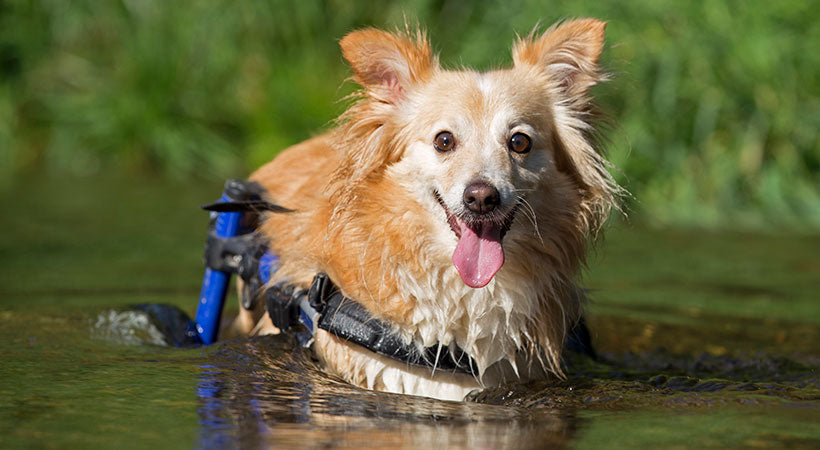Pomeranian Lifespan: How Long Do Pomeranians Live? (Life Expectancy)

How to Keep Your Dog Safe Around Water this Summer
It's summer! With that comes time spent around pools, lakes, rivers, and beaches. Make sure you know how to keep your dog safe around water.
Prevention & Preparedness
If you take common sense precautions, you can keep your dog safe around water this summer.

First of all, your dog should obey you very well OUT of the water before you consider taking her INTO the water. Otherwise, the water could be very dangerous for the dog!
Your dog needs to heed your commands, especially "come." If she's tiring out or swimming too far away and needs help, it is essential that she listen to you or else she could drown.
One of the most common mistakes people make is assuming that all dogs are natural swimmers. Some are, some aren't, so it is essential to spend time with your dog in shallow water until he gets the hang of it.
Keeping your dog on a leash for the first several times is a good idea. Dogs may be able to paddle under water, but that's different than swimming. Don't let your dog go into deeper water until you are confident that your dog is actually swimming.
Be aware that some breeds such as Pugs and French Bulldogs generally don't do well in the water. Their heavy chests make them tire easily. Other breeds like the Basset Hound have body shapes that are not well suited for swimming either. These types of breeds are best suited to enjoying an outing close to the shore but not in the water.
Water Safety Tips for Your Dog

1. Invest in a pet life jacket. Dogs do indeed tire out and can drown quickly. A life vest helps you spot your dog in the water and should have a handle so that you can grab it easily to help your dog in case of emergency.
2. Keep your dog in sight at all times! Just like children, dogs should be supervised and not left unattended.
3. Go to a pet first aid and CPR class. Better safe than sorry! Many veterinarians teach classes, as do many local Red Cross chapters.
4. Keep your dog out of very cold water to prevent hypothermia. Dogs feel the cold, just like humans!
5. Don't feed your dog immediately before swimming. Waiting two to four hours after feeding is best.
6. Provide shade when your dog is not in the water to prevent heatstroke, and beware of heatstroke symptoms.
7. Encourage your dog to drink lots of fresh water that you provide. Drinking pool, ocean, lake, or river water can make a dog sick!
8. Make sure your dog's paws don't blister on very hot surfaces, and check for broken shells, glass, or sand after beach outings.
9. Dry your dog's ears after he's been in the water to prevent infection.
10. Rinse your dog off after swimming in a pool, river, lake, or ocean to remove minerals, salt, and chlorine that can irritate skin.
11. Teach your dog how to get in and out of your pool with stairs or a non-skid ramp. Only let your dog around the pool under supervision, just like with children.
Senior & Special Needs Dogs and the Water
A senior or disabled dog can enjoy the summer around the water, but only under close supervision.

An older dog may not realize that they aren't the young pups they used to be and may be more ambitious in the water than is prudent. But an elderly dog is likely to tire more easily in the water, so always be close at hand, and keep that doggie life vest on! Keep swimming sessions short, and be sure to keep your dog well hydrated.
If your dog has epilepsy, this presents a special challenge, because if a seizure happens in the water it can be deadly. A dog can drown very quickly, so be sure to consult with your veterinarian before bringing an epileptic dog into the water.
If your dog has mobility challenges or is in a dog wheelchair, she can still enjoy shallow water. A kiddie pool can provide lots of fun for a dog, and the shoreline of a beach, river, or lake can be a joyful experience -- but you must supervise your dog very closely at all times!
Splash!
Prevention and preparedness are key to being able to safely spend lots of time in or near the water with your dog this summer. Be safe, and have a great time!









